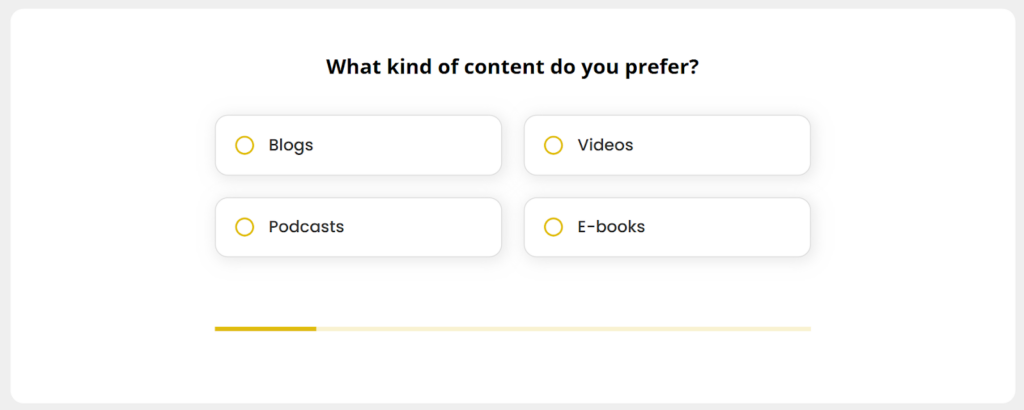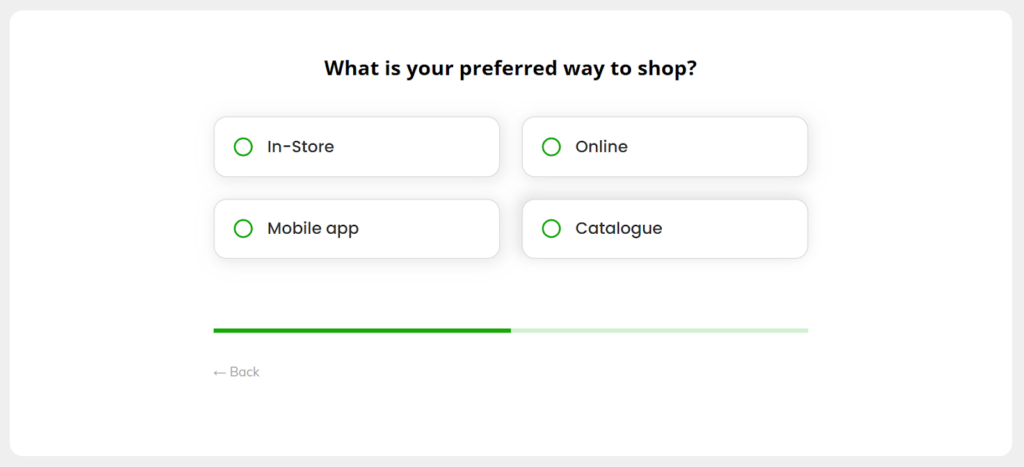Drip Marketing Campaigns
« Back to Glossary IndexQuick Summary
This article explains how drip marketing campaigns automate lead engagement through targeted, timely messaging. By nurturing prospects over time, these campaigns boost engagement, conversions, and retention. To succeed, segment your audience, personalize your content, and continuously monitor campaign performance. For more strategies on optimizing drip campaigns and improving lead capture, explore additional resources on our blog.
Drive Real Results and Boost Conversions with Drip Campaigns
Drip marketing campaigns are not your ordinary marketing campaigns; they automate lead engagement by sending a series of carefully timed messages, ensuring consistent communication that drives real results. With 80% higher open rates and 3x higher click-through rates than single emails, drip campaigns significantly impact lead nurturing and conversions.
But how much are you really taking advantage of this strategy to stay ahead in your game?
To help you figure out, this Growform guide will give you a brief and insightful dive into everything about drip marketing campaigns and keep your leads engaged.
Why Listen to Us?
At Growform, our multi-step forms have significantly increased conversion rates for clients like BeMarketable and Stax Payments.

Our platform offers features like customizable templates, conditional logic, and easy integrations, ensuring efficient lead management. Rated 5/5 on Capterra, Growform is a trusted partner in lead generation.
What Are Drip Marketing Campaigns?
Drip marketing campaigns are a type of automated marketing strategy where a series of pre-written messages (emails, texts, or other content) are sent to prospects or customers over a period of time. The idea of this technique is to nurture leads, build relationships, and guide them through a sales funnel or customer journey.
For example, an e-commerce store might send a welcome email, followed by product recommendations and a discount reminder. Meanwhile, a SaaS company may use an onboarding drip sequence to gradually introduce features, helping new users reach their first “aha” moment.
Key components of a drip campaign include:
- Segmentation: Audiences receive personalized content based on behavior, demographics, or engagement history.
- Multichannel integration: Drip campaigns can extend beyond emails, incorporating SMS, direct mail, and social media ads for a broader engagement strategy.
- Optimized timing: Messages are spaced strategically to maintain engagement without overwhelming recipients.
- Performance tracking: Marketers analyze open rates, CTRs, and conversions to refine messaging and improve results.
Drip Marketing Campaigns vs. Nurture Campaigns
You might confuse drip marketing campaigns with nurture campaigns, as they both engage leads over time. But they serve different purposes and operate differently.
- Automation vs. Personalization: Drip campaigns follow a set schedule, delivering messages at fixed intervals. Nurture campaigns, however, adapt to user behavior, adjusting content based on engagement.
- Goal-Oriented vs. Relationship-Building: Drip campaigns push leads toward a specific action (e.g., a purchase). Nurture campaigns focus on educating and building long-term trust.
- Timing: Drip campaigns send messages at predetermined times, while nurture campaigns react dynamically to user actions and intent signals.
Benefits of Drip Marketing Campaigns
Higher Engagement & Conversions
With drip marketing campaigns, you can keep your leads engaged by delivering timely, relevant content tailored to their behavior. Instead of overwhelming your prospects with a single push, they create a structured, ongoing conversation that builds trust and increases conversions.
As part of the process, you can use our content marketing template to learn your prospect’s content preferences, helping you target their interests more effectively.

Key factors driving engagement and conversions:
- Behavior-triggered messaging: Emails or SMS are sent based on user actions, such as signing up, viewing a product, or abandoning a cart.
- Progressive content delivery: Each message is a follow-up of the previous one, which guides your prospects through awareness, consideration, and decision stages.
- Testing & optimization: A/B testing subject lines, timing, and content ensures maximum engagement and response rates.
Efficient Lead Nurturing
You can nurture your leads with drip marketing campaigns by delivering relevant content at critical touchpoints. Instead of relying on manual follow-ups (which can cost you hours), you can move leads through the funnel with precision, missing no opportunity.
Key elements of effective lead nurturing:
- Progressive education: Content gradually introduces key product benefits, addressing objections over time.
- Multi-channel integration: Email, SMS, and retargeting work together to reinforce messaging.
Our ActiveCampaign integration seamlessly transfers captured leads into these automated email workflows, helping you trigger personalized drip campaigns instantly. This ensures timely follow-ups, better segmentation, and improved lead nurturing without manual intervention.
Improved Retention & Customer Lifetime Value
Drip marketing campaigns keep your customers engaged even after conversion, reinforcing your brand value and driving repeat business. For subscription-based businesses, retention-focused drips help prevent churn by re-engaging inactive users before they lapse.
Retention strategies within drip campaigns include:
- Onboarding sequences: Educate users on your product features to enhance buying.
- Re-engagement flows: Target inactive customers with personalized offers or content that grab their attention back.
How to Automate Drip Marketing Campaigns
1. Set Up Trigger-Based Workflows
To automate your drip marketing campaigns, start by setting up trigger-based workflows. These workflows respond to user actions, ensuring that your leads get the right message at the right time without you needing to follow up manually. Common triggers include:
- Form submissions: When a user signs up or requests a resource, an automated sequence can immediately send confirmation and follow-up emails.
- Behavioral triggers: Automated emails or SMS can be sent when a user abandons a cart or revisits specific pages.
- Time-based sequences: Set up follow-ups at scheduled intervals to keep nurturing leads over time.
A great way to enhance these workflows is by using multi-step forms. Instead of overwhelming users with long forms, breaking the process into smaller steps can significantly increase your conversion rates. As Giles Williams, Co-founder & CTO, shared:
“Being able to spread the questions across multiple steps is great – some of our forms have twice as many fields as before, yet still convert better. I can spin up a form to test an idea without dev team involvement. Integrations are a nice touch too!”

By integrating multi-step forms into your workflows with Growform, you can collect more detailed information while keeping the user experience seamless and engaging. This allows you to capture more leads without the friction of long, intimidating forms, and automatically feed them into your follow-up sequences.
2. Segment & Personalize Messaging
Segmentation ensures each lead receives not just any content, but ones personalized to their needs, keeping them engaged and increasing conversion rates.
Instead of generic messages, businesses should categorize leads based on intent, behavior, or demographics.
Key segmentation strategies:
- Behavior-based grouping: Identify users who open emails, click links, or revisit key pages.
- Demographic & firmographic filters: Adjust messaging for different industries, company sizes, or buyer personas.
- Lifecycle stage segmentation: Prospects at the awareness stage need educational content, while those further along require conversion-focused messaging.
Refined segmentation allows businesses to deliver relevant, high-impact messaging that aligns with each lead’s journey, improving overall campaign performance.
3. Monitor & Optimize Performance
Automation isn’t a set-it-and-forget-it strategy, you need to constantly monitor and optimize. Businesses must track performance metrics to refine messaging and optimize audience interactions.
Key metrics to monitor:
- Open & click-through rates: Identify subject lines and content that drive engagement.
- Conversion rates: Track how many leads take desired actions, like booking a call or making a purchase.
- Drop-off points: Detect where leads disengage and adjust messaging to re-engage them.
Consistently analyzing campaign data helps businesses refine their drip sequences for maximum efficiency and ROI.
Streamline Lead Capture from Drip Marketing Campaigns with Growform
Drip marketing campaigns are a gem of a strategy, which, when used the right way, can yield high engagement and conversions. However, success starts with capturing quality leads efficiently, and this is where we play a key role.
Growform helps businesses generate and convert leads with high-converting, multi-step forms. Our intuitive design and seamless integrations capture prospects effectively and funnel them into drip campaigns, boosting overall campaign performance.
Enhance your drip marketing campaigns with Growform. Start your 14-day free trial today!
Recent Posts
- Your Guide to Using Webflow Form Builder Effectively
- Top 5 Lead Capture Form Examples That Can Boost Your Conversions (2025)
- What Is an Elementor Multi-Step Form & How Does Growform Improve It?
- We Review The Best Microsoft Forms Alternatives for Better Customization and Control
- Here’s Our Review of the Best Form Builders For WordPress Sites
